
Concept explainers
Convert each shorthand structure to a complete structure with all atoms and lone pairs drawn in.
-
a.
b.
c.
d. 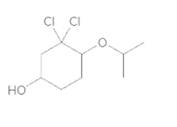
(a)
Interpretation:
To convert the following shorthand structure to complete structure with all atoms and lone pairs drawn.
Concept Introduction:
Complete structure of a compound is the one in which all the bonds, atoms and lone pairs are shown. Example of complete structure is given below.
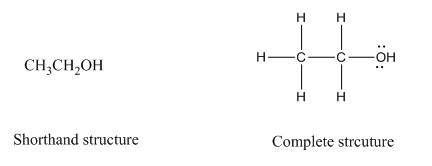
In shorthand structure, bond between the atoms and lone pairs of atoms are not shown. But, in complete structure, all the bonds between atoms and lone pairs are shown.
Answer to Problem 11.43P
Complete structure of the compound is,
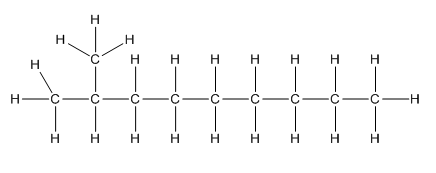
Explanation of Solution
Given compound is as follows:
To −CH group two methyl
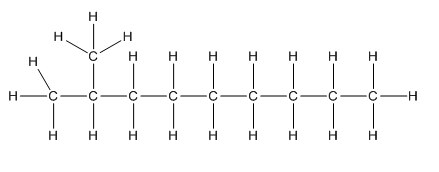
(b)
Interpretation:
To convert the following shorthand structure to complete structure with all atoms and lone pairs drawn.
Concept Introduction:
Complete structure of a compound is the one in which all the bonds, atoms and lone pairs are shown. Example of complete structure is given below.
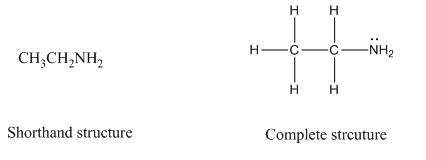
In shorthand structure, bond between the atoms and lone pairs of atoms are not shown. But, in complete structure, all the bonds between atoms and lone pairs are shown.
Answer to Problem 11.43P
Complete structure of the compound is as follows:
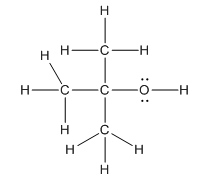
Explanation of Solution
In the compound
Hence, complete structure of the compound is as follows:
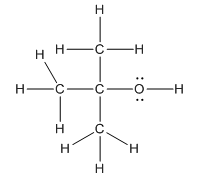
(c)
Interpretation:
To convert the following shorthand structure to complete structure with all atoms and lone pairs drawn.
Concept Introduction:
Complete structure of a compound is the one in which all the bonds, atoms and lone pairs are shown. Example of complete structure is given below.
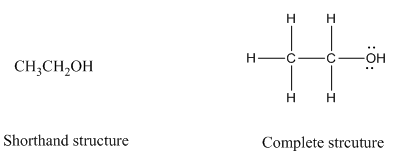
In shorthand structure, bond between the atoms and lone pairs of atoms are not shown. But, in complete structure, all the bonds between atoms and lone pairs are shown.
Answer to Problem 11.43P
Complete structure of the compound is as follows:
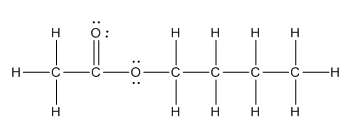
Explanation of Solution
Given compound is as follows:
In the complete structure, all the bonds between atoms and lone pairs are to be shown. Two oxygen atoms present. Both the oxygen atoms have two lone pairs (as the total number of valence electron of O is 6 and out of these 2 are involved in bond formation) on it. Hence, complete structure of the compound is as follows:
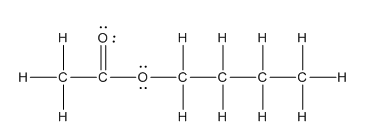
(d)
Interpretation:
To convert the following shorthand structure to complete structure with all atoms and lone pairs drawn.
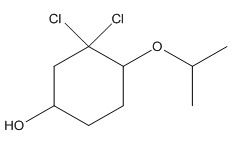
Concept Introduction:
Complete structure of a compound is the one in which all the bonds, atoms and lone pairs are shown. Example of complete structure is given below.
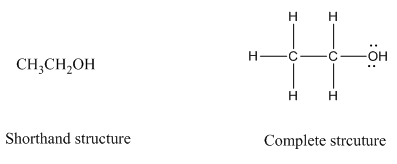
In shorthand structure, bond between the atoms and lone pairs of atoms are not shown. But, in complete structure, all the bonds between atoms and lone pairs are shown.
Answer to Problem 11.43P
Complete structure is as follows:
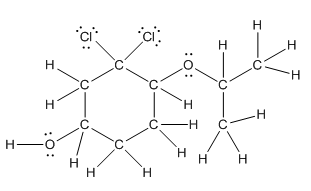
Explanation of Solution
Given compound is as follows:
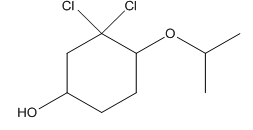
In complete structure, all the carbon atoms, hydrogen atoms and all the lone pairs should be shown. In the compound two chlorine atoms (as the total number of valence electron of Cl is 7 and out of these 1 is involved in bond formation), one oxygen atom and one −OH group(as the total number of valence electron of O is 6 and out of these 2 are involved in bond formation) present which has lone pairs. So, complete structure is as follows:
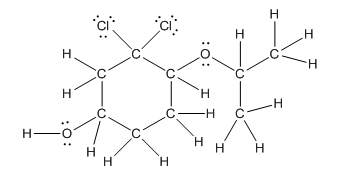
Want to see more full solutions like this?
Chapter 11 Solutions
EBK GENERAL, ORGANIC, & BIOLOGICAL CHEM
- Please help me answer the following questions. My answers weren't good enough. Need to know whyy the following chemicals were not used in this experiment related to the melting points and kf values. For lab notebook not a graded assignments.arrow_forwardDraw the arrow pushing reaction mechanism. DO NOT ANSWER IF YOU WONT DRAW IT. Do not use chat gpt.arrow_forwardComplete the following esterification reaction by drawing the structural formula of the product formed. HOH HO i catalyst catalyst OH HO (product has rum flavor) (product has orange flavor)arrow_forward
- The statements in the tables below are about two different chemical equilibria. The symbols have their usual meaning, for example AG stands for the standard Gibbs free energy of reaction and K stands for the equilibrium constant. In each table, there may be one statement that is faise because it contradicts the other three statements. If you find a false statement, check the box next to t Otherwise, check the "no false statements" box under the table. statement false? AG"1 no false statements: statement false? AG-0 0 InK-0 0 K-1 0 AH-TAS no false statements 2arrow_forwardComplete the following esterification reactions by drawing the line formulas of the carboxylic acid and alcohol required to form the ester shown. catalyst catalyst catalyst apricot fragrancearrow_forwardShow the saponification products of the following ester: You don't need to draw in the Na+ cation. catalyst, A catalyst, A catalyst, Aarrow_forward
- What would happen if the carboxylic acid and alcohol groups were on the same molecule? In essence, the molecule reacts with itself. Draw the structure of the products formed in this manner using the reactants below. If two functional groups interact with one another on the same molecule, this is called an “intramolecular" (within one) rather than "intermolecular" (between two or more) attack. OH OH catalyst OH HO catalyst catalyst HO OHarrow_forwardQ3: Write in the starting alkyl bromide used to form the following products. Include any reactants, reagents, and solvents over the reaction arrow. If more than one step is required, denote separate steps by using 1), 2), 3), etc. H OH racemic OH OH 5 racemicarrow_forwardDraw the Lewis structure of the SO3-O(CH3)2 complex shown in the bottom right of slide 2in lecture 3-3 (“Me” means a CH3 group) – include all valence electron pairs and formal charges.From this structure, should the complex be a stable molecule? Explain.arrow_forward
 Chemistry: The Molecular ScienceChemistryISBN:9781285199047Author:John W. Moore, Conrad L. StanitskiPublisher:Cengage Learning
Chemistry: The Molecular ScienceChemistryISBN:9781285199047Author:John W. Moore, Conrad L. StanitskiPublisher:Cengage Learning Introductory Chemistry: A FoundationChemistryISBN:9781337399425Author:Steven S. Zumdahl, Donald J. DeCostePublisher:Cengage Learning
Introductory Chemistry: A FoundationChemistryISBN:9781337399425Author:Steven S. Zumdahl, Donald J. DeCostePublisher:Cengage Learning


